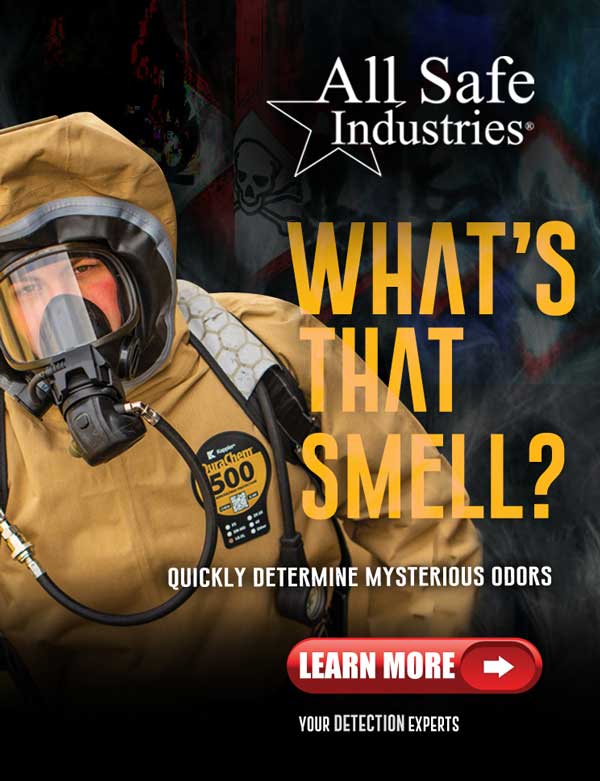HMN-Hazmat Nation has kicked off another “Tech Talk” segment sharing with hazmat teams and responders around the country. We are pooling our resources to answer all your questions and share your ideas.
Building a strong Special Operations Team
By Captain Todd Poland
Fort Myers Fire Department
Have you ever wondered how to get a special operations team started at your fire department? Is your current special operations team experiencing problems getting over the hump to the next level? Building a strong special operations team is not an easy task, but if you are willing to put the work in you can provide these services at a high level to your community.
The first element to building a strong special operations team is building interest, which involves communicating what hazmat or any other specialty is all about. I always like to tell people that special operations guys are like the navy seals of the Fire department. We always respond to specialized missions deemed too dangerous for the normal operations of the fire department. Normal operations of fire departments are considered fire suppression, vehicle extrication, and medical. Special operations are exactly what the word means… “special”.
This is your hazardous materials, high angle, dive, confined space, trench, marine ops, structural collapse, and at some departments explosive and ordnance disposal (EOD). This is why building a strong specialty team is vitally important. Let’s focus specifically on hazmat as the specialty that we will discuss.
Think of building a strong special operations team like building a house, you have to start with a strong foundation before you can put walls up… right? Building a strong hazmat team isn’t easy, but if you start with the basics of hazmat you can build off of it.
The basics, or foundation of our house would be your awareness level hazmat stuff like ERG, initial isolation distances, and recognition and identification, or fire academy 101 stuff.
Some might think this is meaningless, but countless times I have been on hazmat calls where the basics were not completed like isolating and protecting the scene by restricting access to the incident, which is a basic skill of hazmat. By isolating the incident with our protective action distances we can protect others from harm and contamination. This is as simple as setting up your hot, warm, and cold zones. Also, if on scene resources are able to identify the materials involved the responding hazmat companies jobs gets that much easier. This is usually as simple as obtaining shipping papers, asking questions to those involved, or identifying the shipping containers and placards. Once your team masters these skills you can advance to the walls of your house.
The walls of the house would be your operations level stuff like defensive techniques, diking damning, line of sight rescues, and decontamination. Operations level hazmat is doing every task on a hazmat scene as long as it is considered defensive, or not immersing yourself in the product. I always teach my team members that if they can initiate a line of sight rescue in bunker gear (depending on the product involved) that we should never delay saving a life while waiting for the hazmat unit to arrive.
With this comes the skills of decontamination, or emergency decon. Emergency decon can be completed with everything one has on most engine companies, a hose line, tank of water, and liquid soap. I teach my team members that when life safety is involved we are not concerned with runoff from decon, but again most engine companies carry what is needed to create a basic catch system if required. Using a charged two and a half inch hose line one can use a salvage cover tucking the edges of the salvage cover over the looped hose line to create a catch basin that would hold plenty of contaminated water runoff. I always say we are only limited to our imagination when it comes to hazmat. Having sturdy walls of our house is vital to our next step in building a strong special operations team.
Once we have the walls of our house completed we move on to the roof, which is the technician level or offensive operations stuff like plugging, patching, off loading, transferring, over packing, other control techniques, patient decon, hazmat paramedicine, and weapons of mass destruction, or WMDs. Technician level operations are the advanced skills one needs to train their members to in order to have a sound team. The state or authority having jurisdiction usually mandates technician level skills; for instance, my team members are required to be certified to the state technician level, which requires a formal technician class of 160 hours of training followed by a state mandated test. My team is also mandated by the Florida State Emergency Response Commission, or SERC, which mandates what training, equipment, and credentials are required to be a hazmat/ WMD team. Offensive operations are any skills that a team member has to actively be involved with the product in order to mitigate the incident. Today our hazmat teams also have the responsibility of providing responses to WMD incidents as well. WMDs are the chemical, biological, radiological, nuclear, and etiological/ explosive (CBRNE) threats that we face today. These are some of the most complicated incident types we will run as specialized units and are usually associated with terrorism. These types of incidents are uniquely dangerous and extensive training and continuing education on each WMD subject is required. Having a great understanding of the technician level operations related to hazmat is a key element to a strong special operations team and leads us to the next step of our house.
With a house comes ongoing maintenance, or with hazmat and special operations teams continuing education and training. Having an annual training plan is the best practice in order to keep your teams skills sharp. Let’s face it, we don’t run hazmat calls everyday, so we should train for what we do the least because the on the job experience is limited. I use quarterly trainings of shift, team, and substance of the month (SOTM) trainings to keep my teams skills sharp. We also participate in regional and state drills with other regional response teams to continue our collaborative skill sets. Every month we are doing a different training with elements of our house being the topic of the training. Shift trainings are instructor led trainings that cover all of our shifts and are based on our refresher competencies compliant with NFPA 472 along with our other state requirements.
Team trainings are usually a large drill or exercise that is scenario based and involves the whole team coming together to complete an incident from call initiation to clean up and documentation. Substance of the month trainings are trainings that involve the team member training to identify a certain substance that we have concocted up for them. This usually involves the team member using our identification equipment to analyze the substance. We also require them to fill out a SOTM worksheet that asks what the initial isolation distance, PPE, and major concerns would be of the selected substance. SOTM trainings allow the team members to get one-on-one time with the equipment while also using actual substances, which is important for keeping skills sharp. While maintaining our skills we can move on the next phase of our house.
Once we have our ongoing maintenance of our house we need to start thinking about remodeling our house for future plans or succession planning. Succession planning is a vital part of any team especially if you want to continue functioning at a high level. This can be done by assigning team members roles and responsibilities that current leadership are doing from command roles to administrative tasks. I also try to put up and coming team members in roles within the incident command structure during hazmat training exercises. This accomplishes two things; first, it gives members a taste of command roles and a place to get a dry run for what is considered an intimidating call for any incident commander. Second, it gives them a chance to see that they can do the job. Succession planning is one of the most important tasks associated with any specialty team or organization for that matter. We should always strive to train the next guy to take our job one day. This not only builds confidence of team members, but also builds trusts and provides opportunities for your members to progress.
These are a few of the elements that I have used to establish a strong special operations team for the community I serve.
Communication with your team members is another aspect that was not mentioned with our house analogy, but serves as an important element. Never let your members guess what is going on with current events surrounding the team. Be straightforward with them, give respect to get respect, and always make time for their concerns.
Also, in order to succeed, a supportive administration is necessary to support the teams endeavors. Having a solid foundation, sturdy walls, a sound roof, on going maintenance, and plans for the future are all vital to not only building a strong house, but they are all also vital to building a strong special operations team as well.
About Captain Todd Poland
Todd Poland is a Captain with the City of Fort Myers Fire Department with 15 years on the job. He serves as a company officer on Engine 15 and Hazmat-15, which responds to hazmat calls for the City of Fort Myers and Lee County. He has served as the Special Operations Team Coordinator for three years and has 14 years with the team serving as a team member for eight years and special operations command for the last six. Captain Poland holds multiple certifications related to special operations disciplines, is a State Certified Fire Instructor, State Certified Fire Officer II, and teaches regularly on hazmat specialty topics. Captain Poland has an Associate Degree in Fire Science from Edison State College, and is finishing a Bachelors in Fire Science Administration from Columbia Southern University.
This story is brought to you by HazSim. Keep training realistic! Over 100 HazSim systems in use across the U.S. Find out about demo’s in your area, available grants, hands on hazmat training, and pricing. Visit HazSim.com for details.
Want to know about a specific tool? How about asking why this or that happened on a run? You have your chance to submit your question and get a customized answer from guys in the know and share your Q&A on Hazmat Nation!
Submit your question to [email protected]



